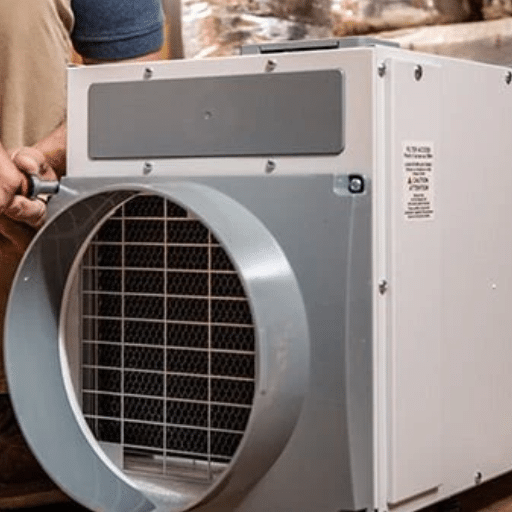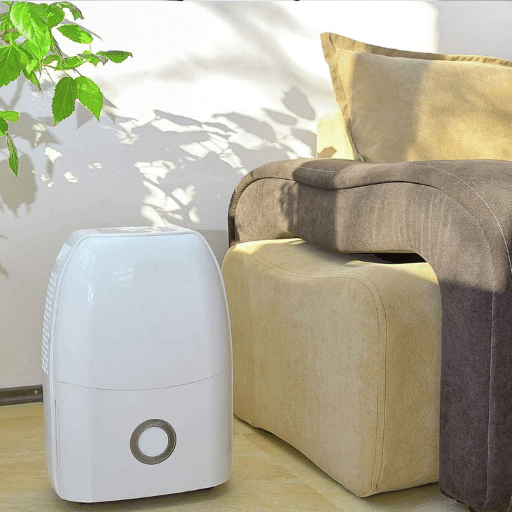Garages and basements are often ignored in the quest for optimum indoor air quality, yet these areas develop excessive humidity levels. Increased humidity results in mold growth, damage to stored items, and eventually structural concerns. A dehumidifier might just be your savior if one has been continuously plagued with that dried-out musty odor, and observing condensation on surfaces, along with some visible signs of mold. Whether you intend to secure your tools, keep your car safe, or just want to work in a healthier area, this comprehensive guide will help you choose the perfect dehumidifier for your garage or basement, understand why humidity control matters, and learn how to protect your belongings and your house.
Understanding Humidity in Garages
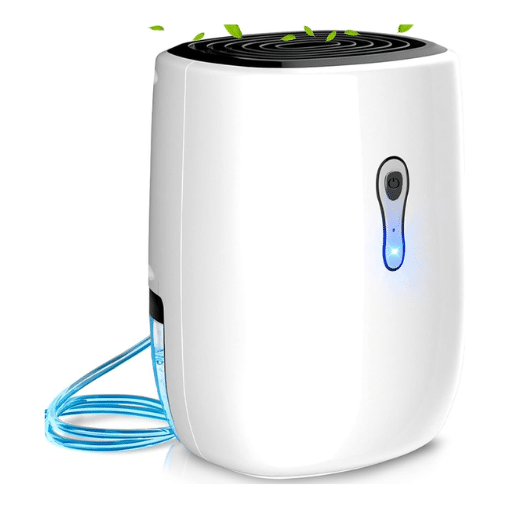
Usually, garages tend to have greater humidity because of poor insulation, scarce ventilation, and exposure to weather. Too much moisture in the garage means rust for tools and equipment, mold on items, and damage to belongings kept in storage. To make the best use of any humidity-related control, it’s good to know the moisture source, be it a leak or condensation, and get it worked on immediately. Employing a dehumidifier can help keep some levels under control, whereas ventilation and weatherproofing would keep the issue away next time. The main thing about keeping the garage functional and safe is to keep it clean and dry.
What Causes High Humidity in Garages?
The high humidity in many garages can be caused by factors connected to environmental or structural problems. Understanding these causes is the first step toward effective moisture management.
Common Causes:
- Poor Ventilation: Moisture-laden air pools in enclosed spaces, particularly without adequate air circulation.
- Water Intrusion: Leaks in the roof, walls, or foundation cracks allow water to enter, contributing to rising humidity levels.
- Temperature Fluctuations: Shifts cause condensation on surfaces such as concrete floors or metal tools, especially in humid climates.
- Wet Items: Movement of anything wet into the garage—from clothes to garden tools to a freshly washed car—increases moisture levels in the air.
- Climate Conditions: Naturally humid environments and heavy rainfall make garages in certain areas prone to persistent humidity concerns.
💡 Solution: One can remediate these causes by improving insulation, sealing cracks, and employing dehumidifying measures.
Effects of Humidity on Garage Structures
Excess moisture in the air wreaks havoc on various garage components. Understanding these effects helps you appreciate the importance of proper humidity control.
🔧 Metal Corrosion and Rust
Excess moisture causes rust and corrosion on steel tools and metal instruments, preventing them from working efficiently. Metal structures like supports become highly vulnerable to corrosion damage.
🦠 Mold and Mildew Growth
High moisture level conditions favor the growth of mold and mildew, causing foul smells, discolorations, and health hazards to users of the garage while spreading to stored items.
🪵 Damage to Wooden Structures
Humidity causes swelling, warping, or splitting of wooden beams, shelves, and storage units, weakening them and reducing the overall strength of wooden elements in the garage.
🏗️ Weakened Concrete Foundation
Constant dampness penetrating concrete floors or walls leads to cracks and structural instability. Water intrusion may also cause efflorescence—white powdery deposits on surfaces.
🎨 Paints and Coatings Peeling
Increased humidity causes paint or protective coatings to blister, crack, or peel from walls, ceilings, and floors, destroying the garage’s appearance and exposing surfaces to further moisture damage.
Importance of Humidity Control
Proper humidity control in a garage is essential to maintain its functionality, appearance, and overall structural integrity. Unregulated moisture can cause multiple issues, some of which may result in expensive repairs or reduced longevity of stored items.
Key Benefits of Humidity Control
✓ Mold and Mildew Prevention
Controlling humidity levels prevents growth of mold and mildew, eliminating ugly stains and protecting respiratory health of anyone who uses the garage.
✓ Protection of Stored Items
Garages store tools, electronics, and seasonal goods. Proper humidity prevents rust, corrosion, and damage, extending their effectiveness and usage life.
✓ Vehicle Protection
Moisture control prevents rusting on vehicle undersides and metallic parts, safeguarding your car’s durability and performance over time.
✓ Higher Energy Efficiency
Low humidity creates optimal conditions for heating or cooling systems, improving energy efficiency and resulting in lower utility bills.
✓ Structural Longevity
Controlling excess moisture prevents the garage from losing strength over time, avoiding cracked walls, peeling paint, and gradual deterioration.
⚠️ Important: Dehumidifiers, appropriate ventilation, and moisture-resistant materials can assist in solving these problems and maintaining your garage’s condition.
Types of Dehumidifiers for Garages
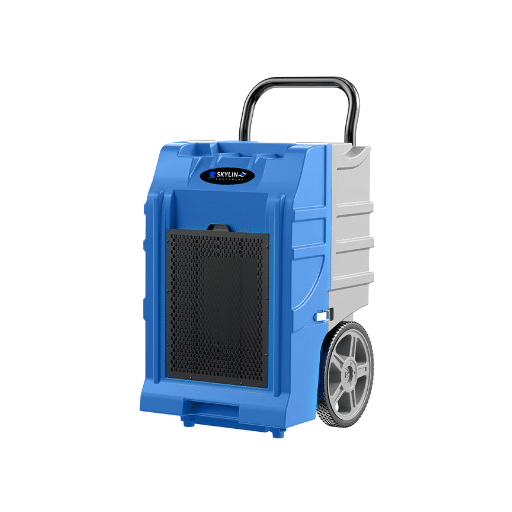
The size of the room, moisture level, and features most needed should be the main considerations when choosing a dehumidifier for the garage. Here are the most common types:
❄️ Refrigerant Dehumidifiers
These dehumidifiers are very efficient in dealing with excessive moisture in high or moderate temperature conditions. They use a cooling coil to condense moisture from the air, which then collects in a tank or drains away. Excellent for warm environment garages with high moisture removal needs for large areas.
🌡️ Desiccant Dehumidifiers
Desiccant dehumidifiers eliminate water from the air through a special moisture absorbent material. Unlike refrigerant counterparts, these units work well even in low temperatures, making them ideal for unheated garages or cold environments. They are usually lightweight and quiet, though they can consume more energy.
🏠 Whole-House Dehumidifiers
An excellent option that works efficiently and discreetly by connecting with the HVAC system when a garage acts as another room in the house. These dehumidifiers manage humidity in both the garage and home. Higher on the initial cost scale, they represent a long-term investment for ultimate humidity control.
🚚 Portable Dehumidifiers
Small and versatile, mainly used for smaller garages and occasional use. You can move them around wherever you need quicker humidity control. Although they have less capacity than other options, they are affordable and convenient for most homeowners.
⚙️ Industrial-Grade Dehumidifiers
Suitable for garages used as workshops with working equipment and sensitive materials. Industrial-grade dehumidifiers provide the performance needed and are hardy by design. They can handle large amounts of moisture and perform well in large spaces under difficult conditions.
Modern Features: With technological developments, most modern dehumidifiers are now equipped with smart controls, energy efficiency options, and auto-drain options for easier maintenance—making it simpler to keep your garage free from humidity damage.
Portable Dehumidifiers
A portable dehumidifier is one of the most common options for those attempting to manage humidity levels in garages, primarily because of their flexibility and ease of use. These units are compact and lightweight, allowing easy movement from one area to another when needed.
Key Specifications
Capacity Range
20-50 pints per day
Coverage Area
Up to 1,500 sq ft
Energy Efficient
Energy Star certified
Advanced Features
- Digital Humidistats: Precise control over relative humidity (RH) levels
- Timers & Energy-Saving Modes: Maintain optimal conditions while minimizing energy costs
- Auto-Shutoff Functions: Prevent overflow when water reservoir is full
- Continuous Drain Options: Hassle-free operation without manual emptying
- HEPA Filtering: Combat humidity while improving air quality by removing allergens and dust
💡 Selection Guide
When selecting a portable dehumidifier, consider the size of your garage and average humidity levels in your area:
- 30-pint unit: Recommended for spaces up to 1,500 square feet with mild dampness
- 50-pint unit: Better suited for larger or more humid conditions
- Energy Star certification: Helps reduce long-term energy consumption
50 Pint Dehumidifiers
Capable of 50 pints, such dehumidifiers are ideal for moderately sized rooms anywhere between 1,500 and 4,500 square feet, depending upon the humidity level in that area. These units are designed to handle high humidity levels efficiently, extracting excess moisture and creating a comfortable atmosphere.
Key Features
📊 Capacity and Coverage
- Removes 50 pints of moisture per day
- Suitable for basements, garages, and large areas
- Ideal for spaces with condensation or persistent dampness
⚡ Energy Efficiency
- Energy Star certified models available
- Promotes energy savings
- Reduces electricity costs significantly
🔧 Advanced Features
- Built-in digital humidistat for precise control
- Auto restart after power failure
- Continuous drain hose option eliminates manual emptying
Top 50-Pint Models (2023)
| Model | Coverage | Tank Capacity | Special Features | Price |
|---|---|---|---|---|
| hOmeLabs 4,500 Sq. Ft. | Up to 4,500 sq. ft. | 1.8 gallons | Noise level: 50 dB, Energy Star | $260 |
| Frigidaire High-Efficiency | Up to 3,500 sq. ft. | 2 gallons | Washable filter, quiet operation | $300 |
| Vacplus with Wi-Fi | Up to 4,000 sq. ft. | 1.6 gallons | Wi-Fi-enabled app control, remote monitoring | $250 |
💡 Buying Tip: A 50-pint dehumidifier should be selected with due regard to prevailing humidity in your garage or living area. For maximum efficiency, opt for one with advanced filtration systems and easy draining arrangements. These units are perfect for fighting persistent moisture or preventing mold and mildew.
Energy Star-Rated Dehumidifiers
Given the Energy Star rating, dehumidifiers are recognized for energy efficiency and eco-friendly operation. These models minimize electricity use while ensuring effective moisture control, making them ideal for lowering utility bills and reducing environmental impact.
Top Energy Star-Rated Models
| Model | Capacity | Key Features | Price |
|---|---|---|---|
| Frigidaire FFAP5033W1 | 50 pints/day | Internal pump, washable filter, continuous drain | ~$290 |
| Honeywell TP50AWKN | 50 pints/day | Wi-Fi-enabled, auto-drain system, digital controls | ~$280 |
| hOmeLabs HME020006N | 50 pints/day | Quiet operation, touch panel, 1.8-gallon water tank | ~$250 |
| GE APHR50LB | 50 pints/day | Smart Dry technology, continuous drain, large water tank | ~$270 |
| Midea MAD50C1ZWS | 50 pints/day | Auto-restart, reusable filter, easy-touch controls | ~$240 |
🌿 Important Consideration: When choosing an Energy Star-rated dehumidifier, consider room size, moisture level, and convenience features to ensure you select the correct unit for your needs.
Choosing the Right Garage Dehumidifier
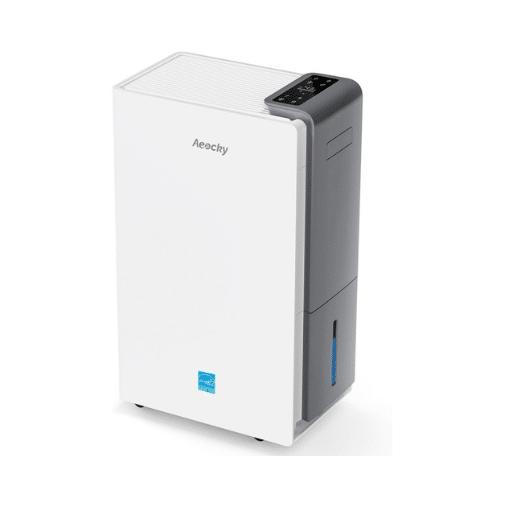
Important factors must be weighed to acquire the ideal dehumidifier for garage upkeep, such as the size of the garage, average humidity levels, and conveniences like auto-restart or continuous drainage. Below is a comprehensive chart of 5 excellent dehumidifier models for garages.
Recommended Garage Dehumidifiers Comparison
| Model | Capacity | Key Features | Energy Rating | Price |
|---|---|---|---|---|
| Frigidaire FFAP5033W1 | 50 pints/day | Internal pump, continuous drainage, customizable humidity control | ⭐ Energy Star | ~$290 |
| hOmeLabs HME020031N | 50 pints/day | Quiet operation, auto shut-off, easy controls | ⭐ Energy Star | ~$260 |
| Vremi Moisture Maniac | 50 pints/day | Compact design, auto defrost, reusable filter | ⭐ Energy Star | ~$250 |
| GE APER50LZ | 50 pints/day | Smart Wi-Fi connectivity, continuous drain option, LED controls | ⭐ Energy Star | ~$280 |
| TOSOT GDN50BA-A3EBA2E | 50 pints/day | Low noise level, power outage restart, continuous drainage | ⭐ Energy Star | ~$310 |
📊 Decision Guide: By comparing these models for specifications and price, you can make a well-informed choice that adequately controls humidity in your garage, protecting your belongings and enhancing air quality.
Factors to Consider: Size and Capacity
Check size and capacity requirements to have a dehumidifier that serves best in your garage. The capacity of a dehumidifier is measured in pints of moisture removed per day, depending largely upon the size of your garage and the amount of humidity present.
🏠 Small Garage
Size: 200-300 square feet
Recommended Capacity: 20-30 pints/day
Note: For high-humidity areas, consider a 40-pint unit for maximum moisture control.
🏡 Medium Garage
Size: 300-500 square feet
Recommended Capacity: 30-50 pints/day
Note: Choose the upper range for humid climates or poor ventilation.
🏢 Large Garage
Size: 500+ square feet
Recommended Capacity: 50+ pints/day
Note: Larger units accommodate more air volume and work efficiently during peak moisture seasons.
Additional Considerations
- 🚗 Vehicles & Equipment: Multiple vehicles or equipment generating additional moisture may require higher capacity
- ⚡ Energy Efficiency: Energy Star-rated models use less electricity and perform better under all conditions
- 📏 Physical Size: Balance capacity with unit size—higher-capacity models may take up more space
- 💧 Humidity Level: Maintain even humidity levels to prevent mildew, rust, and moisture-related damage
✅ Pro Tip: Following the U.S. Department of Energy’s guidelines, Energy Star-rated high-efficiency dehumidifiers perform noticeably better and would be a worthy investment in keeping even humidity levels. A well-selected dehumidifier ensures your garage stays dry!
Dehumidifier Features to Look For
When selecting a dehumidifier for your garage, certain features can significantly enhance performance, convenience, and efficiency. Here are the essential features to prioritize:
🎚️ Humidity Control Settings
Look for a dehumidifier with variable humidity control that allows you to set and maintain ideal humidity levels, typically between 30% and 50%, depending on your garage’s specific needs.
⚡ Energy Efficiency
Units with an Energy Star rating assure energy efficiency. They use less power, allowing you to keep your energy bills low while maintaining optimal performance.
💧 Tank Capacity and Drainage
A bigger tank capacity allows longer operation without emptying. Models with continuous drainage options let you hook a drain hose to a floor drain, sink, or outlet for hassle-free maintenance.
🚚 Portability and Size
Sleek design complemented with wheel casters or carrying handles makes it easy to move the dehumidifier around different areas of the garage as needed.
⏰ Auto-Restart and Timer
Auto-restart resumes operation once power is restored after an outage, while timer functions allow you to set working hours for energy savings and convenience.
Comparison: Dehumidifiers for Garage vs. Basement
Quick Summary: Dehumidifiers for garages are designed to handle fluctuating temperatures and protect stored items, while those for basements focus on maintaining air quality and preventing mold in consistently damp environments.
| Key Point | Garage | Basement |
|---|---|---|
| Temperature | Fluctuating | Consistent |
| Humidity Level | Moderate to high | High |
| Primary Concern | Item protection | Mold prevention |
| Air Circulation | Limited | Moderate |
| Dehumidifier Type | Desiccant preferred | Refrigerant preferred |
| Energy Use | Moderate | High |
| Installation | Portable or wall-mounted | Portable |
| Noise Level | Low to moderate | Moderate |
| Capacity | Medium to large | Large |
| Maintenance | Regular filter cleaning | Frequent water drainage |
💡 Key Takeaway: This table highlights the essential differences and considerations for choosing dehumidifiers for garages versus basements. Understanding these distinctions will help you make the best choice for your specific space.
Installation and Maintenance of Garage Dehumidifiers
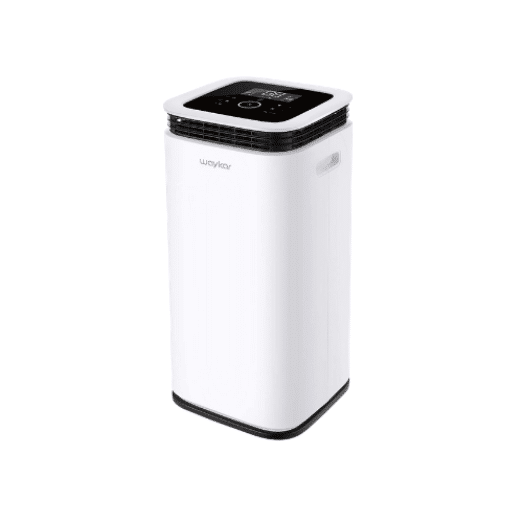
Proper installation and maintenance guarantee the garage dehumidifier’s efficiency and durability. Following these guidelines will ensure optimal performance and longevity.
Installation Best Practices
📍 Positioning the Dehumidifier
Place the dehumidifier in an open area, away from walls or obstructions. Ensure at least a 12-inch clearance in front and on either side for proper airflow.
🌬️ Ventilation
Well-ventilated garages increase dehumidifier efficiency. Consider leaving the garage door slightly open or installing a vent for better air circulation.
💧 Drainage Setup
Attach a continuous drainage hose to the outlet so you never have to empty water tanks manually. Ensure the hose slopes downward to a drainage area.
🔌 Electrical Connection
Ensure your dehumidifier receives power from a properly grounded electric outlet to prevent any hazards from occurring.
Setting Up Your Dehumidifier
To make sure your dehumidifier does its job both efficiently and effectively, it must be set up properly. Follow these preparation steps to get your dehumidifier ready for optimal use:
Step-by-Step Setup Guide
Choose a Location
Place the dehumidifier in a central area with open air circulation. Do not place it near walls or furniture that could block ventilation.
Set Desired Humidity Level
Most dehumidifiers have settings for desired humidity. Typically, 30-50% relative humidity is recommended for comfort and mold prevention. Note: Humidity lower than 30% may cause items to become too dry.
Plug into an Electric Outlet
Ensure your dehumidifier receives power from a properly grounded electric outlet to prevent any hazards.
Empty the Water Tank or Connect Drain Hose
If using a tank, empty it regularly. Alternatively, connect a drain hose for automatic water drainage to a sink or floor drain.
Check the Air Filters
Check air filters to make sure they are clean before operating the dehumidifier. Clean filters ensure efficient working and better indoor air quality.
Using Drain Hoses for Continuous Drainage
Using a drain hose for continuous drainage ensures adequate operation of the dehumidifier so that you don’t need to empty a water tank repeatedly. Here are the essentials and steps for smooth continuous drainage:
Continuous Drainage Setup Guide
Choosing the Right Hose
Select a standard garden hose or drainage hose recommended by the manufacturer. Ensure sufficient length to reach the drainage area without kinking or obstruction.
Locate the Drain Outlet
Find the drain outlet on the dehumidifier, usually positioned at the back or side of the unit. Check your user manual for its exact position.
Secure Hose Attachment
Attach the hose to the drain outlet and tighten the connection securely to avoid leaks. Ensure the connection is properly tightened before proceeding.
Ensure Downward Flow
The hose should slope downward toward the drainage point as continuous drainage relies on gravity. Do not place the hose pushing water uphill or forming loops.
Secure Drain Area
Lead the hose to a drain location—sink or sump pump. Make sure the hose end sits tight to prevent water spillage.
✅ Result: By following these steps, continuous drainage becomes easy, increasing convenience and the efficiency of your dehumidifier’s operation.
Regular Maintenance Tips
For peak performance and durability, your dehumidifier must follow these five essential maintenance tips:
5 Essential Maintenance Practices
Clean the Air Filter Regularly
Check and clean the air filter at least every two weeks or as stipulated by the manufacturer. A clogged filter restricts airflow and reduces efficiency. Replace if showing signs of major wear or damage.
Coil Inspection and Cleaning
Dust and debris can settle on the coils, reducing temperature control effectiveness. Occasionally wipe coils lightly with a soft cloth or brush to keep them working adequately.
Empty Water Bucket Frequently
If not using continuous drainage, empty the water bucket frequently to avoid overflow. Clean and disinfect the bin with mild soap solution to prevent mold and bacterial growth.
Check for Hose Blockage
If running continuous drainage, check the hose occasionally for blockages or kinks. Blockages prevent drainage and cause water accumulation.
Maintain Optimal Humidity Levels
Use the hygrometer in your dehumidifier to check indoor humidity levels and adjust accordingly. Maintain 30-50% relative humidity for comfort and to prevent excess moisture or dryness.
⚠️ Important: Consistent maintenance increases the dehumidifier’s lifespan and ensures a healthy indoor environment for your garage.
Smart Dehumidifiers for Enhanced Control
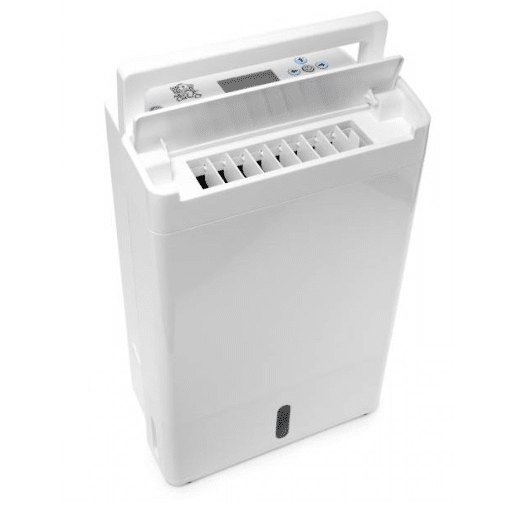
Smart dehumidifiers represent the next generation of humidity control, integrating existing technologies that enable customers to control or monitor settings from anywhere, optimize energy usage, and receive alerts when maintenance is due. These advanced units combine efficiency with convenience for hassle-free moisture management.
Top 5 Smart Dehumidifiers
| Model | Capacity | Key Smart Features |
|---|---|---|
| Frigidaire FFAD5033W1 | 50 pints/day |
|
| TOSOT 50-Pint WiFi | 50 pints/day |
|
| Honeywell TP70AWKN | 70 pints/day |
|
| LG PuriCare 50 Pint | 50 pints/day |
|
| GE APER50LZ | 50 pints/day |
|
Features of Smart Dehumidifiers
Strong Moisture Removal Capacity
Capacity to remove up to 50 pints of moisture ensures living spaces remain comfortable and dry at all times.
Wi-Fi Compatibility
Seamlessly connects with dedicated apps, allowing users to monitor and control their dehumidifier from their smartphone anywhere.
Voice Control Integration
Use voice commands via Alexa and Google Home to operate the dehumidifier hands-free for ultimate convenience.
Continuous Drain
Carefree moisture disposalthrough continuous drain connection eliminates the need for easy emptying of water tanks.
Portability & Convenience
Easy-roll wheels and lightweight design aid mobility between rooms whenever desired for flexible placement.
Benefits of Automated Humidity Control
Automated humidity control systems offer numerous advantages that enhance comfort, efficiency, and protection for your garage and home environment.
Improved Air Quality
Maintains optimal humidity levels (30-50%), reducing allergen formation of mold, mildew, and dust mites for cleaner and healthier air throughout your space.
Energy Efficiency
Automated humidity regulation limits system operating times to when really needed, lowering utility bills and reducing the cost of maintaining a comfortable environment.
Extended Lifespan of Home Structures
Appropriate humidity control reduces excess moisture that could damage wood, drywall, and insulation, extending the life and structural integrity of your home.
Enhanced Comfort
When humidity levels stay consistent, the air will neither be dry nor highly humid, maintaining favorable conditions for the home throughout the year.
Protection of Electronics and Furniture
Eliminating excessive moisture protects delicate electronics and wooden furniture from corrosion, warping, and other damage caused by humidity.
Integrating Smart Technology in Your Garage
Modern garages can benefit tremendously from smart technology integration. By incorporating intelligent systems, you can transform your garage into a functional, secure, and energy-efficient space.
Smart Garage Solutions
🚪 Smart Garage Door Opener
Monitor and control your garage door remotely from your smartphone, receiving real-time status updates and alerts.
💡 Motion-Activated Lighting
Automatic lights that turn on when motion is detected, providing convenience and enhanced safety measures.
📹 Security Cameras
Monitor your garage 24/7 with smart security cameras that provide live feeds and recording capabilities.
🔌 Smart Plugs
Control power to various devices remotely, helping save energy and manage equipment efficiently.
🌡️ Temperature Sensors
Monitor and maintain optimal temperature levels to protect stored items and improve overall comfort.
💧 Smart Dehumidifier
Automatically control humidity levels with Wi-Fi-enabled dehumidifiers that you can monitor and adjust from anywhere.
🏆 Result: These integrated smart changes make your garage highly functional, secure, and energy efficient—transforming it into a modern, well-protected space.
References
An Evaluation of Strategies to Reduce Transport of Pollutants from Garages to Homes
This study examines methods to minimize pollutant transfer from garages, highlighting the role of air quality control systems.
Indoor Air Pollution: A Comprehensive Review of Public Health Challenges and Prevention Policies
This review discusses indoor air quality issues, including the impact of pollutants in spaces like garages.
Comparative Analysis of Standalone and Desiccant Dehumidifier Systems
This paper evaluates the performance of dehumidifier systems in residential settings, offering insights into their effectiveness.
Frequently Asked Questions (FAQ)
❓ What is the best dehumidifier for a garage?
The best dehumidifier for a garage depends on the size and humidity levels of the space. For standard car garages, a 50-pint dehumidifier is often recommended as it efficiently removes excess moisture while maintaining optimal humidity levels. Look for features like a built-in pump for continuous drainage and Energy Star certification for energy efficiency.
❓ How does a garage dehumidifier work?
A garage dehumidifier works by drawing humid air into the unit, where it is cooled to condense moisture from the air. The water is then collected in a water tank or drained through a hose. This process helps maintain a healthy humidity level, preventing issues such as mold growth and water damage.
❓ Can a dehumidifier prevent water damage in a garage?
Yes, using a dehumidifier in your garage can significantly reduce the risk of water damage. By lowering humidity levels, it prevents condensation on walls and ceilings, which can lead to mold growth and structural damage over time. A portable dehumidifier with a drain hose can provide continuous drainage, making it a practical solution.
❓ What size dehumidifier is needed for a 2-car garage?
A 50-pint dehumidifier is typically sufficient for a 2-car garage, but for larger spaces or areas with high humidity, consider a model with higher capacity, such as an 80-pint dehumidifier. Ensure it has features like a humidistat and auto defrost for optimal performance.
❓ Is an Energy Star dehumidifier worth it?
Yes, an Energy Star dehumidifier is worth the investment as it uses less energy while effectively managing humidity levels. This can lead to savings on your electricity bill, making it a cost-effective choice for long-term use, especially in high-humidity environments.
❓ How do I set up a dehumidifier with a drain hose?
To set up a dehumidifier with a drain hose, first place the unit on a flat surface in your garage. Connect the drain hose to the designated outlet on the dehumidifier, ensuring it is secure. Position the other end of the hose towards a floor drain or outside to allow for continuous drainage.
❓ Can I use a dehumidifier for my basement?
Absolutely! A dehumidifier for basements is highly recommended, especially in areas prone to high humidity. Models like the 50-pint dehumidifier or 80-pint dehumidifier are suitable for basements, helping to control moisture and prevent mold growth.
❓ What features should I look for in a garage dehumidifier?
When selecting a garage dehumidifier, look for features such as a built-in pump for continuous drainage, an Energy Star rating for efficiency, a humidistat for humidity control, and a quiet operation mode. Additionally, consider the size of the unit to ensure it can handle the square footage of your garage.
❓ How often should I run my garage dehumidifier?
The frequency of running your garage dehumidifier depends on the humidity levels in your area. During humid summer months, you may need to run it continuously, while during drier seasons, it can be used less frequently. Monitor the humidity level and adjust usage accordingly to maintain a comfortable environment.

